The Devon Pension Fund believes climate change poses significant risks to global financial stability and could thereby create climate-related financial risks to the Fund’s investments, unless action is taken to mitigate these risks. We are committed to working with the Brunel Pension Partnership to decarbonise our investments in listed portfolios.
Net Zero Commitment
The Devon Fund is a member of the Institutional Investors Group on Climate Change (IIGCC). The IIGCC enjoys a strong international reputation for providing robust, insightful thought leadership across the climate agenda informed by leading members of the investment community committed to action on climate change.
The Devon Fund is a signatory to the IIGCC’s Commitment to achieve net zero portfolio greenhouse gas emissions by 2050 or sooner. The full commitment statement, launched in March 2021 can be found here.
In order to achieve this goal, the Fund has set more detailed targets as follows:
- A 7% per annum reduction in the Weighted Average Carbon Intensity (WACI) of the Fund’s investments, based on the March 2019 calculation of the WACI, with the intention of achieving a 50-75% reduction by 2030.
- The same targets also apply to the Fund’s exposure to companies with fossil fuel reserves as a proxy for downstream scope 3 emissions which are not captured within the WACI calculation.
- An allocation of 5% of the total Fund to be invested in renewable energy infrastructure assets by 2025.
- 100% of developed listed equities should be aligned or aligning to the Paris Agreement by 2030 and 100% of all listed equities should be aligned or aligning by 2040.
Carbon Footprint
A key part of the approach is to regularly measure the carbon footprint of the Fund’s equity investments. Calculating the impact of a company’s emissions involves looking not only at the operations of the company itself, but also looking at the impact of the products that it sells and the impact of its supply chain. These are illustrated in the following diagram:
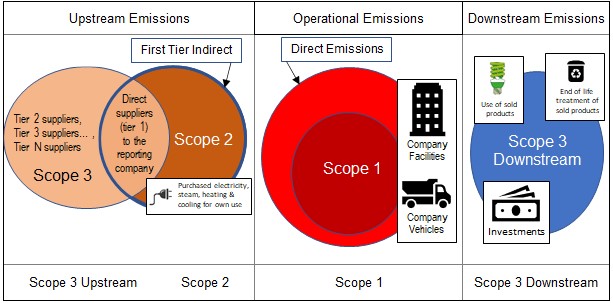
The WACI for each portfolio and for the Fund’s total equity holdings as at 31 December 2023 is shown in the graph below.
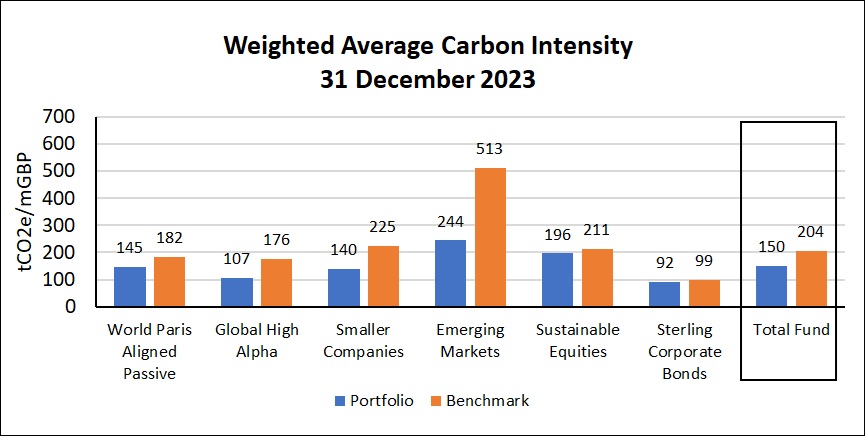
This is the sixth annual assessment of the Fund’s carbon footprint. Progress since March 2019 is shown in the following chart, with the proportionate contribution from each equity portfolio also highlighted.
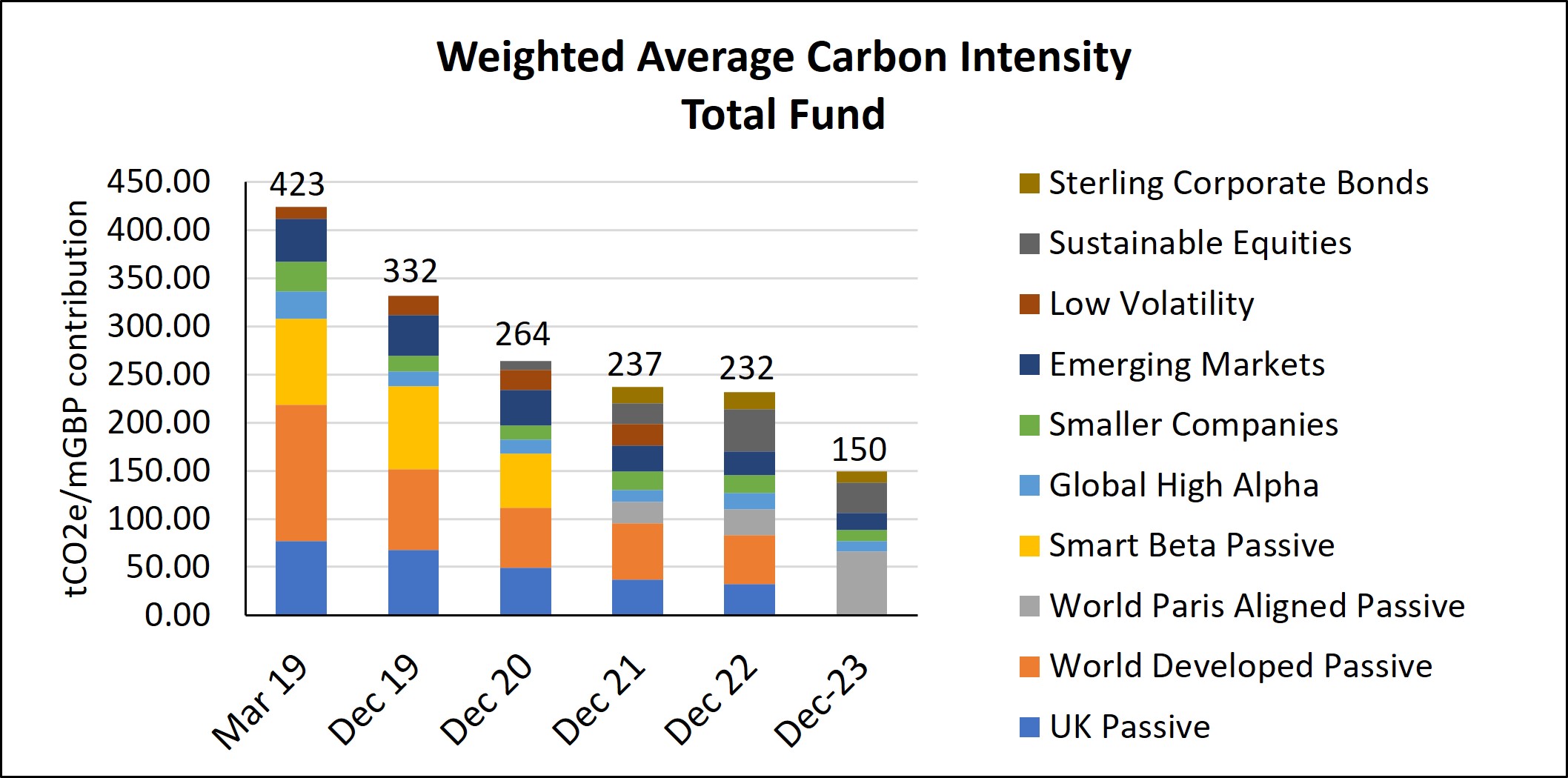
The chart shows an overall reduction of 65% in the Fund’s WACI since March 2019, which is significant progress towards the target of a 50-75% reduction by 2030, and well ahead of the 7% per year target. The transfer of all the Fund’s passive equity allocation to the World Paris Aligned Passive Fund was a significant factor in the 20% reduction from December 2022 to December 2023.
Reserves Exposure
One of the issues with the WACI measurement is that it does not capture the downstream tier 3 emissions. Downstream Scope 3 emissions based on product in use (or disposal) are not widely calculated by companies or reported. However, downstream Scope 3 are critical when looking at the impact / investment risk of car manufacturers and fossil fuel companies. This is linked with the risk involved in stranded assets, where companies may have large reserves of fossil fuels that will not be usable if we are to achieve carbon reduction targets across the economy and so become “stranded”. Exposure to reserves data is often used as a proxy for downstream emissions.
The reserves exposure for each portfolio and for the Fund’s total equity holdings as at 31 December 2023 is shown in the graph below. The figures shown are on a value of holdings basis, which means the value of any company with fossil fuel reserves is included in full in the analysis, regardless of what proportion of their business relates to extraction.
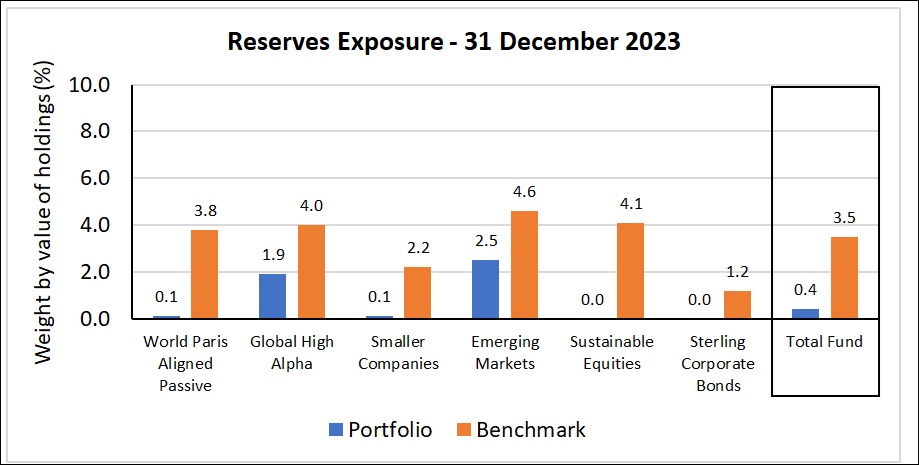
The following graph shows progress to date since March 2019.
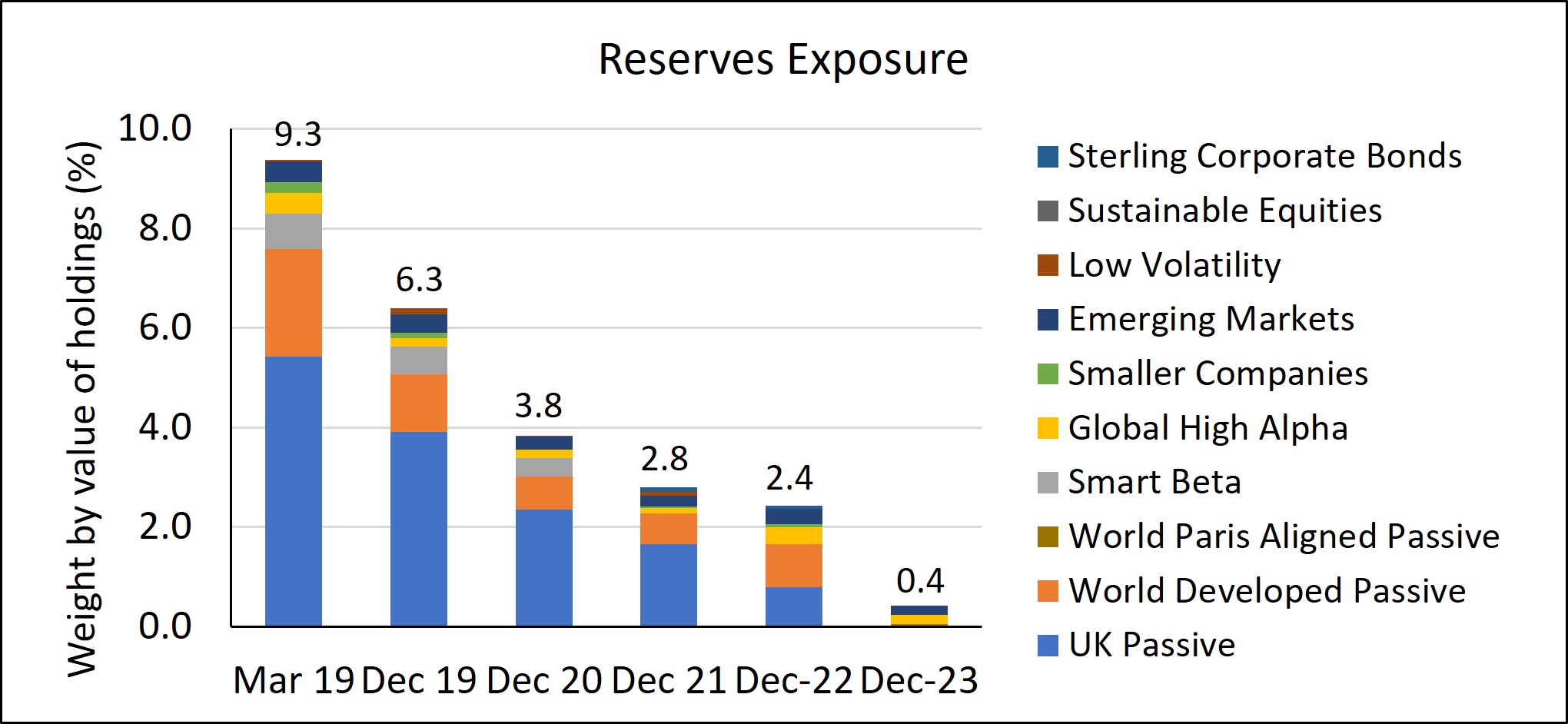
Overall, reserves exposure has fallen from 9.3% to 0.4% on a value of holdings basis. During 2023, the Fund has consolidated its passive equity allocation into the World Paris Aligned benchmark fund which has significantly reduced the Fund’s reserves exposure since December 2022.
Renewables Investment
In addition to reducing the carbon emissions of its investments, the Committee also set a target to have invested 5% in renewable energy infrastructure by 2025. The 5% target represents around half the total infrastructure allocation.
The current investment in renewable infrastructure, as at 31 March 2024, is summarised in the following chart and table.
| Category | Investment (£’000) |
| Cogeneration | 15,950 |
| Hydro | 229 |
| Mixed Renewables | 26,025 |
| Solar | 119,625 |
| Waste to Energy | 13,540 |
| Wind | 54,993 |
| Power Storage | 9,297 |
| Smart and Efficient Grids | 25,990 |
| 265,649 |
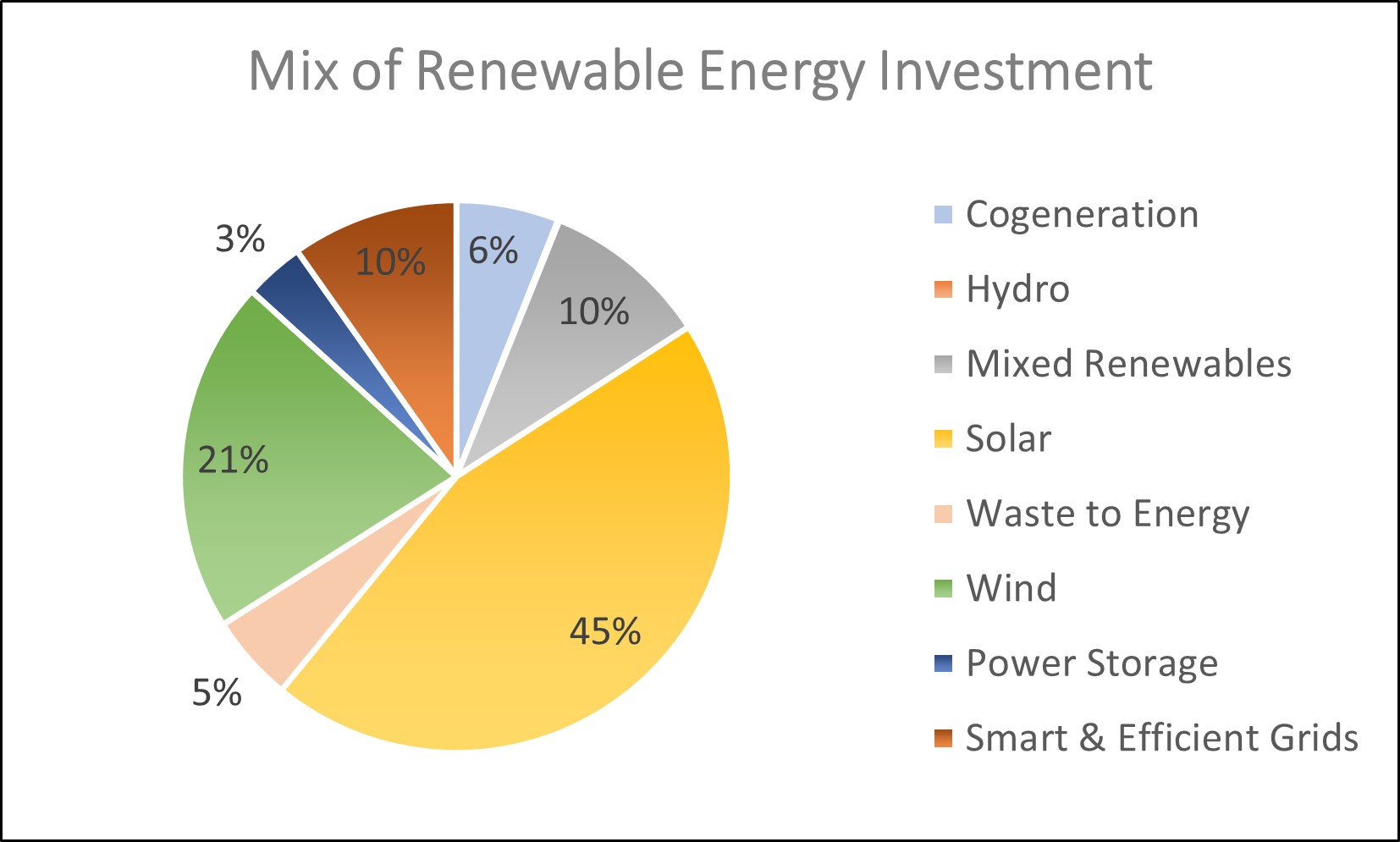
Engagement and Divestment
A key focus of the net zero commitment is on achieving real economy emissions reductions. That means we want to engage with the companies we are invested in and seek reductions in their emissions, not just divest. Divestment may make us look good, but is likely to have less impact on achieving real reductions in emissions across the global economy.
In practice the Fund will look to achieve its targets through a combination of investee companies reducing their emissions, and rebalancing portfolios to reduce their carbon footprint and reserves exposure. The decision to move all of the Fund’s passive equity allocation to the Global Paris Aligned Passive Fund represented a significant divestment from oil companies.
The Devon Fund supports the Brunel Pension Partnership’s approach to climate change and engagement and divestment.